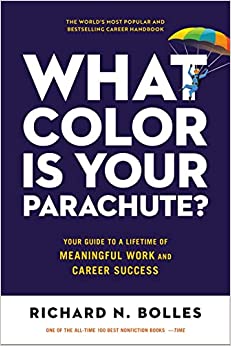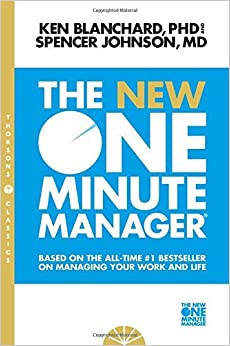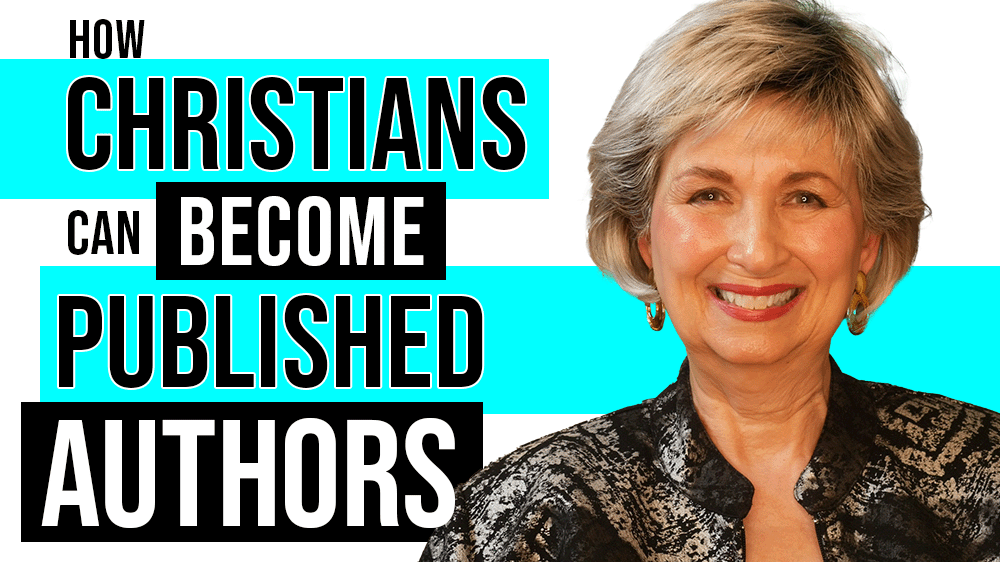Years ago, I refused to even consider self-publishing my books.
Back then, self-published books had a bad reputation. Bookstores refused to carry them. Radio talk show hosts refused to interview self-published authors. Traditional publishers looked down on self-published books, treating them like non-published books.
And then there was the problem of promotion.
Promoting self-published books proved difficult and expensive. More than one author got snookered into paying big bucks to vanity presses that produced inferior books that were not adequately promoted, marketed, distributed, or sold.
But that was then. And times, as Bob Dylan sung, “they are a-changin’.”
The Exciting New World of Self Publishing

Over the past few years, the industry of self-publishing has undergone some remarkable and groundbreaking changes. In the self-publishing market today, you can write, edit, format, and publish your book for an international audience with little or no upfront cost.
That used to be unheard of. I’ve seen some really good things happen for authors who decided to pursue the path of self publishing, and it can also happen for you.
Preconceived notions about self-publishing books have also changed. Sometimes people think that writers who self publish do so because traditional publishers have turned them down. While that is occasionally true, because of the quality and effortless distribution of self publishing systems today, most people are now weighing the pros and cons of self publishing and are producing books themselves.
Publishing your book through Amazon KDP or Ingram, or other free publishing companies has changed the game of publishing forever. No longer are traditional houses the gatekeepers of published books; ordinary, uncontracted writers now have access to the publishing world in a way that could never have been imagined.
Instead of using a traditionally established publishing house, writers can now use a number of self-publishing systems that provide various services for the author, such as printing and binding, proof-reading, editing, designing book covers, etc. In a post-pandemic world where brick-and-mortar bookstores are struggling to keep the lights on, self publishing has become so popular that even experienced, traditionally-published authors are choosing to control the process of their works, from conception to production. Though some of these self publishing resources can be expensive (such as editing, formatting, and cover design); others are affordable. Some do quality print jobs; others don’t.
As a writer who is interested in self publishing, you must investigate thoroughly these self publishing systems before hiring their services.
How does self-publishing differ from traditional publishing? In this blog, we’ll discuss the differences between these two industries and the advantages and disadvantages of each so that you can make an informed decision about how best to publish your book.
The Problems of Self Publishing
Here is the most common question writers ask me about self publishing: How has self publishing changed since “the old days?”
It’s a fair question, given the dynamic development of the industry. But the bottom line is this. In “the old days,” self-publishing used to be a massive headache for the author. Why? Because there were three primary problems that self published authors encountered.
Problem #1: The Cost
Vanity presses and self-publishing systems used to charge an arm and a leg to publish an author’s book. Some charged considerable amounts of money that required the writer to pay the publisher to print the book, edit and format the interior of the book, design the cover and spine of the book, and then bind it all together.
Additionally, authors were required to purchase a certain number of copies of their book (decided by the publishing company). The company offered writers various services, including promotion, proofreading, editing, etc., and each of these services were sold individually and usually with a hefty price tag. Some self-publishers or vanity presses required authors to buy as many as 5,000 or more books as part of the publishing deal, and that didn’t include the time, money, and energy it took to actually sell the books. I’ve known people to spend anywhere from $15,000 to $90,000 to self-publish and promote a single book!
Self published authors then faced the problem of inventory. They had to store, transport, and pitch their books to bookstore owners who were willing to put them on shelves and sell them (often at an additional carrying cost). Some author I knew resorted to selling their books out of their trunk.
Needless to say, many authors grew discouraged by the seemingly impossible amount of work it took to put their books into the hands of readers, and they just gave up. And if the process of self publishing wasn’t enough of a headache, most writers were less than pleased with the final product of their published book.
Problem #2: The Poor Quality
Many authors discovered that when their manuscripts came back from the self-publishing company or vanity press, all bound and printed in book form, the publishing quality was mediocre at best and awful at worst.
Instead of using high-quality paper, the presses opted for cheap thin paper that looked and felt noticeably amateur. The manuscripts were often filled with numerous typos, grammatical errors, and formatting mistakes.
One particular friend of mine spent upwards of $20,000 to have a vanity press print his book. After receiving the final product, he felt so embarrassed and ashamed of the poor quality and large number of typos that he decided to just give them away—much less sell them.
Problem #3: The Book Promotion
Back “in the old days,” a writer’s main job was to write books that were worth reading. But without anyone to help promote the book, the author had little time to do anything, including writing the next book.
Fact is, book promotion really is a full time job. Once upon a time, authors had to do everything but print and bind the book. The vanity press printed and bound the book and received their money. And unless the author paid for other offered services, the publisher had finished his job. Most vanity presses cared little if the author ever sold the books or not.
After the author sold a few copies to his family members and friends, he had no clue how to interest a larger populace into buying his books. He became the “lone ranger” trying to sell the thousands of books stacked up in his garage.
But the Good News is …
The “old days” are gone! Today, self-publishing is a whole new ballgame!
But before you even think about self-publishing your book, be sure to do your research. Find out everything you can about the new wave of self-publishers. It will save you headaches, heartaches, and probably thousands of dollars!
The Beginnings of Self-Publishing
 Self-publishing books is nothing new. In fact, it is a late-medieval tradition. In the early days of the New World, the person with the printing press became the author, publisher, printer, and bookshop.
Self-publishing books is nothing new. In fact, it is a late-medieval tradition. In the early days of the New World, the person with the printing press became the author, publisher, printer, and bookshop.
In the middle of the 15th century, Johannes Gutenberg (1398-1468) converted a wine press into the first printing press with movable metal type. In 1452, he astonished the world by printing 200 copies of the two-volume Gutenberg Bible. The inventor tried to keep his printing press invention a secret; however, before the year 1500, more than 2,500 European cities were using their own printing presses.
The printing press multiplied the output of books dynamically, making them available to the masses. No longer did the transmission of books require the laborious and time-intensive practice of hand-copying books. After Gutenberg’s invention went viral, books could be translated out of Latin—the old-fashioned language of a previous era—and into the common tongue of the populace.
The invention of the printing press sparked an information revolution, much like the invention of the Internet and the current developments in artificial intelligence technology.
Self-publishing your book puts you in direct continuity with a much older tradition. And as history reveals, if the book can strike a chord with the population, not only will it have the chance to withstand the erasing effects of time, but very often it will also be picked up and re-published by traditional publishing houses. Some self-published books have even been purchased at great cost, even though it sold originally as few as 2,000 copies.
Consider These Self-Published Books:
 Richard Nelson Bolles, an Episcopal clergyman, self-published What Color Is Your Parachute? A traditional publisher took notice of the book, picked it up and published it. Since then, the book has been printed in more than 22 editions, 11 languages, and has sold more than 6 million copies. It spent 288 weeks on the New York Times best-seller list.
Richard Nelson Bolles, an Episcopal clergyman, self-published What Color Is Your Parachute? A traditional publisher took notice of the book, picked it up and published it. Since then, the book has been printed in more than 22 editions, 11 languages, and has sold more than 6 million copies. It spent 288 weeks on the New York Times best-seller list.
 Originally self-published by Richard Paul Evans, this 87-page Christmas story went on to sell millions of copies when Simon & Schuster offered Evans $4.2 million for the rights—the largest royalty advance ever paid to an individual for a self-published book (at that time). The book hit the top of Publishers Weekly, was translated into 13 languages, and became a popular film.
Originally self-published by Richard Paul Evans, this 87-page Christmas story went on to sell millions of copies when Simon & Schuster offered Evans $4.2 million for the rights—the largest royalty advance ever paid to an individual for a self-published book (at that time). The book hit the top of Publishers Weekly, was translated into 13 languages, and became a popular film.
 Tom Peters wrote and self-published his book In Search of Excellence, selling more than 25,000 copies of his book himself. When Warner Books, a traditional publisher, took notice and purchased the book rights from Peters, this self-published book went on to sell 10 million more copies and was even heralded by Bloomsbury UK as the “Greatest Business Book of All Time.”
Tom Peters wrote and self-published his book In Search of Excellence, selling more than 25,000 copies of his book himself. When Warner Books, a traditional publisher, took notice and purchased the book rights from Peters, this self-published book went on to sell 10 million more copies and was even heralded by Bloomsbury UK as the “Greatest Business Book of All Time.”
When James Redfield first penned The Celestine Prophecy, a remarkable story about the discovery of an ancient manuscript in rain forests of Peru, he had no idea that Warner Books would offer him a royalty advance of $800,000 for the publishing rights. After being picked up by a traditional publisher, this book became a global phenomenon that sold millions of copies.
 Originally self-published as The One Minute Manager Meets the Monkey by Ken Blanchard and Spencer Johnson, this book became an overnight success when William Morrow, a traditional publisher, offered to buy the book-publishing rights. The book was retitled, expanded and updated, and has currently sold more than 12 million copies in 25 languages.
Originally self-published as The One Minute Manager Meets the Monkey by Ken Blanchard and Spencer Johnson, this book became an overnight success when William Morrow, a traditional publisher, offered to buy the book-publishing rights. The book was retitled, expanded and updated, and has currently sold more than 12 million copies in 25 languages.
The Elements of Style, originally self-published by Williams Strunk, Jr and E. B. White, has become a household name and top-shelf resource for writers, editors, and publishers everywhere. After a traditional publishing house purchased the rights, the book sold 10 million copies, and continues to sell more than 300,000 copies each year.
 Sugar Busters! was written and self-published by four Louisiana medical doctors and a former CEO. After they sold 165,000 copies in just over one year, Ballantine Books bought the book-publishing rights, which catapulted the book into popular markets. Since then, it has sold more than 2 million copies, went into its 49th printing, and spent 192 weeks on bestseller lists.
Sugar Busters! was written and self-published by four Louisiana medical doctors and a former CEO. After they sold 165,000 copies in just over one year, Ballantine Books bought the book-publishing rights, which catapulted the book into popular markets. Since then, it has sold more than 2 million copies, went into its 49th printing, and spent 192 weeks on bestseller lists.
These books, and many more, remind us that we should never underestimate the sales potential of a self-published book.
Advantages of Self-Publishing
 While the disadvantages of self-publishing must be taken into account when you’re thinking about how best to publish your next book, the advantages must also be weighed. And today, there are many advantages to self-publishing:
While the disadvantages of self-publishing must be taken into account when you’re thinking about how best to publish your next book, the advantages must also be weighed. And today, there are many advantages to self-publishing:
- Lightning-Fast: Traditional publishers require at least one or two years after they receive the finished manuscript from the author to be edited, proofread, formatted, typeset, printed, promoted, and distributed. It takes a village to publish a book with a traditional publisher. But self-publishing dramatically reduces the length of time it takes to have your book in the hands of readers. With the lightning-fast process of self-publishing, your book can be printed in a matter of weeks.
- Total Control: As the author of a self-published book, you retain total control of the entire book publishing process from start to finish. You choose the size of your book, the layout, the page design, the total word/page count, and decisions about artwork and and photographs. You also choose the title, the design of the book cover, and the dust-jacket informational blurbs. With regard to the decision-making process, no one tells you what to do. You have total creative control.
- No Book Proposal: A self-published book goes to press without the need of the author or literary agent to sell it to a traditional publisher. Publishers rarely accept finished manuscripts at the front-end of the contract process. Instead, they require lengthy book proposals that can often take as long as the manuscript to write and submit correctly. When deciding whether or not to publish your manuscript, traditional publishers can keep the author waiting months and even years to receive a traditional contract, especially if the proposal is not represented by a literary agent and is sent to only one publisher at a time. If the publisher rejects the book proposal, the author must then send the book proposal to a new publisher, thus triggering another long wait. However, with self-published books, there is no need to convince anyone that your book is going to make a return on the publisher’s investment. You are the only one who needs convincing!
Final Thoughts
There are many advantages to self-publishing your book instead of going with a traditional publisher. However, choosing a traditional publisher to champion your book will present you with many unique advantages, perks, and opportunities.
If you’re scratching your head right now, wondering which publishing route to choose, be sure to read 7 Reasons Why You Should Publish Your Book with a Traditional Publisher.
See our Christian Writers for Life masterclass Traditional Publishing to learn more about the nuts and bolts of publishing your book with a tradition publishing house. Use code WRITENOW for 5% off your Lifetime membership.


Subscribe to our Free

Receive writing tips, links to exclusive “Q&A with Denise” sessions, information on upcoming events, and special discounts directly in your email.









